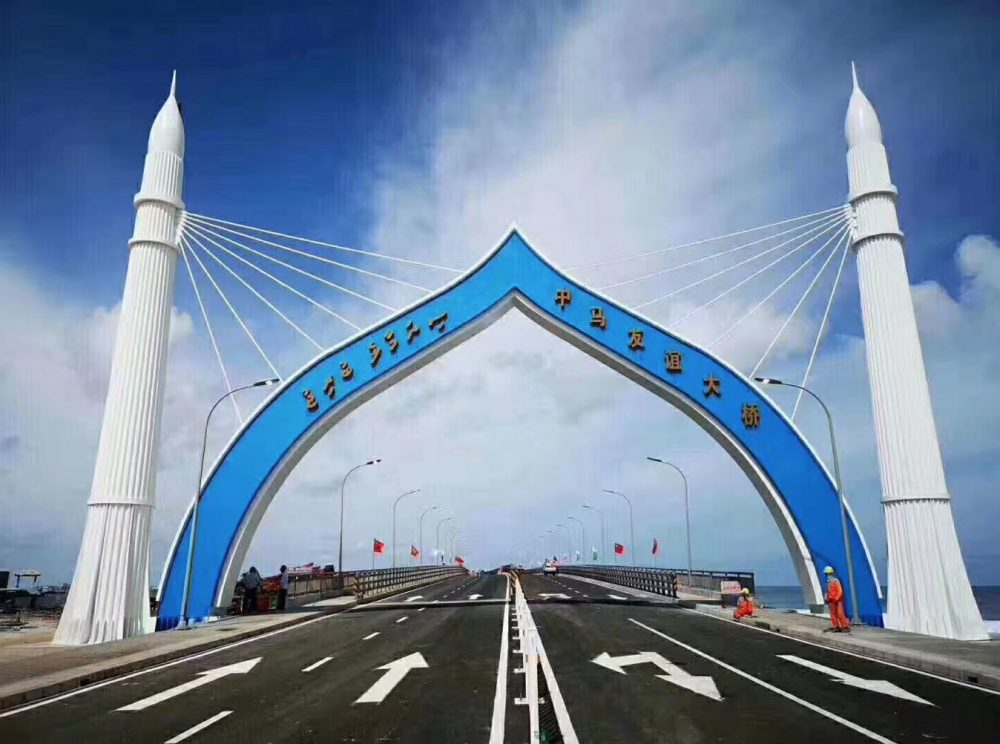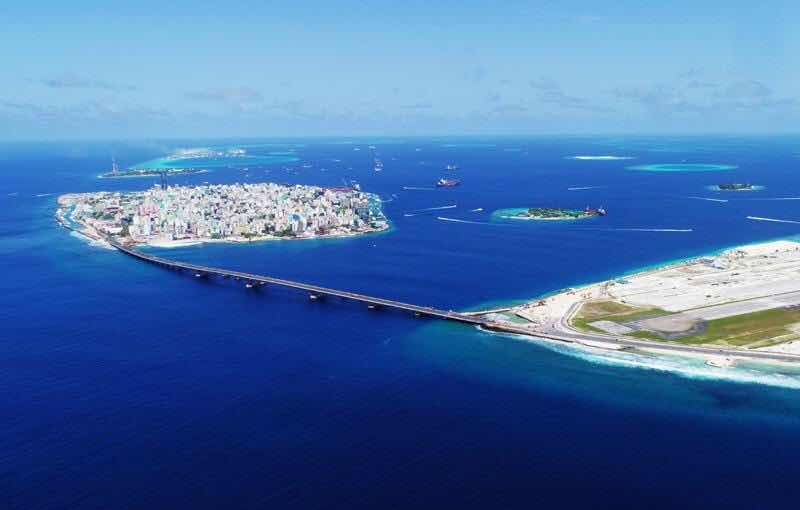
Opinion
09:16, 19-Apr-2019
My story: Bridge of hope for Maldives
Fathimath Saara

Editor's Note: The second Belt and Road Forum for International Cooperation will be held in Beijing at the end of this month. Over the past six years, we have heard many voices – mostly political and economic ones – speak about the BRI. But we wanted to also hear from ordinary people who have experienced the BRI for themselves. Over 100 people took part in our "CGTN Belt and Road Essay Contest," and we selected the 18 best stories. Here is an essay of one of our second-prize winners. The article reflects the author's opinion and not necessarily the views of CGTN.
Making history
I witnessed the making of history in our small island nation of Maldives in 2018 with the opening of its first cross-sea bridge. The bridge was developed as part of China's Belt and Road Initiative (BRI) during the administration of former president Yameen Abdul Gayoom.
The strategically-placed bridge connected the capital city Male with two more islands, which are considered part of the larger metropolitan area.
The additional islands include one allocated for the Velana International Airport and a residential island called Hulhumale, which was developed to ease the congestion in the capital in 2004.
The bridge, 2.1 kilometers in length and 20.3 meters in width, was opened on August 30, 2018. It is called "Sinamale Bridge" and referred to as the China-Maldives Friendship Bridge.

Sinamale Bridge /Courtesy of Fathimath Saara
Sinamale Bridge /Courtesy of Fathimath Saara
Bridge between Maldives and beyond
Let's talk about why this bridge was so important for the residents of Male city.
The world-renowned tourist destination, Maldives, is located in Southeast Asia, and has a population of over 380,000 people. Male city, the urban capital, is just 1.95 square kilometers, but the metropolitan area with the aforementioned airport island and residential island of Hulhumale, as well as another small carbon-free residential island called Villingili, is 3.58 square kilometers.
This is one of the most densely populated capitals in the world. A third of the country's total population resides in the metropolitan area.
Before Sinamale Bridge, anyone who wanted to get to the main airport, Velana International Airport, had to take a 10-to-15-minute ferry ride. Those carrying heavy luggage back and forth from the capital to the 180 plus residential islands via domestic flights or going abroad faced many challenges. But this was before the Sinamale Bridge, built courtesy of the Chinese government.
Now anyone can get to the airport via vehicles, without moving their luggage from car/van to ferry and vice versa. Sinamale Bridge has eased commute for foreign visitors to the capital, who come for business and leisure, and stay at the numerous hotels and guesthouses located in Male city and Hulhumale.
Bridge of convenience
That's just the transportation aspect. Let's talk about the social convenience. The country's government offices, almost all private offices, major businesses and educational institutes are located in the capital Male. But Hulhumale, developed to ease congestion of Male city, is where a large number of residents live.
Residents in Hulhumale had to commute via ferry on a daily basis to Male for either employment, educational, medical or other purposes. This was never easy as weather impacted ferry rides. A one-way ride takes 20 minutes and costs 2.17 yuan. On weekends, when traffic was at its peak, there were long queues at both ferry terminals in Male city and Hulhumale.

Sinamale Bridge enabled strategic connection between the airport and wider metropolitan island of Hulhumale and the urban capital, Male. /Courtesy of Fathimath Saara
Sinamale Bridge enabled strategic connection between the airport and wider metropolitan island of Hulhumale and the urban capital, Male. /Courtesy of Fathimath Saara
The Sinamale Bridge changed this. Residents now travel and commute spontaneously between the capital and Hulhumale with ease and free of charge. Those who have their own motorcycles, cars and other vehicles can cross the bridge without paying any fees.
The bridge has changed people's lives and businesses, making things much easier for everyone living in the area, as well as those visiting the country.
It has paved the way for Hulhumale to become a hub for businesses, targeting a steady flow of customers. It not only eased the movement of residents living in the small congested capital Male, but also enabled people to enjoy leisurely activities in a space that is not crowded by vehicles and people. All in all, it has improved people's lives in every way.
Sinamale Bridge will forever be known as a cornerstone infrastructure project for the ever-growing relations between China and the Maldives. The development of a bridge in this strategic location was previously deemed impossible but the necessity of it was tantamount for the residents of the country. The Belt and Road Initiative made it possible.
The historical landmark
Sinamale Bridge was developed by China Harbor Engineering, affiliated with China Communications Construction Company.
The Chinese government allocated a grant of 116 million U.S. dollars and loan of 72 million U.S. dollars for the project, which cost approximately 200 million U.S. dollars in total. The government of the Maldives had to bear only 12 million U.S. dollars for the project.
This is not the only project conducted by the Chinese government in the Maldives. China has been assisting the country even before the BRI.
The support and assistance for the Maldives by China has always directly benefited all residents while relations flourish day by day based on mutual respect and understanding.
(The author is a news editor from the Maldives. If you want to contribute and have specific expertise, please contact us at opinions@cgtn.com.)

SITEMAP
Copyright © 2018 CGTN. Beijing ICP prepared NO.16065310-3
Copyright © 2018 CGTN. Beijing ICP prepared NO.16065310-3